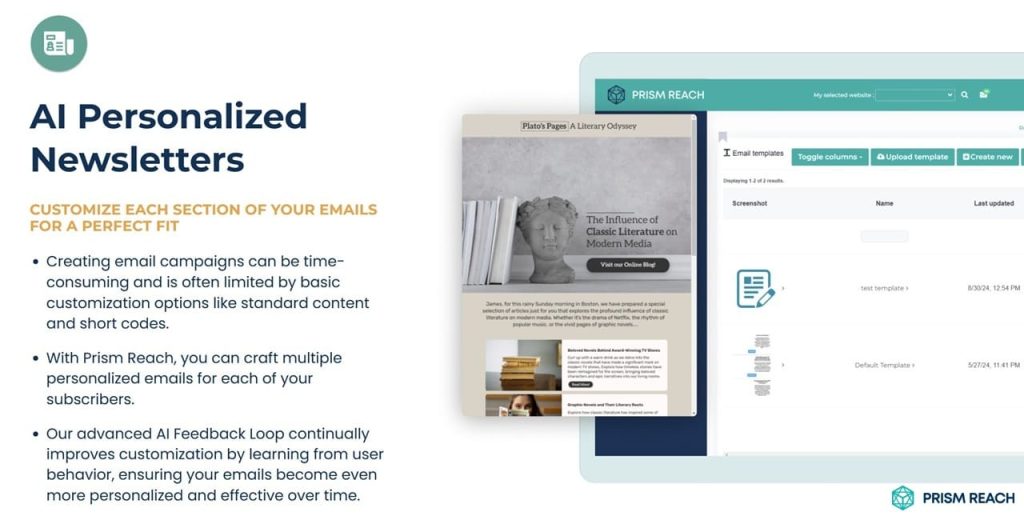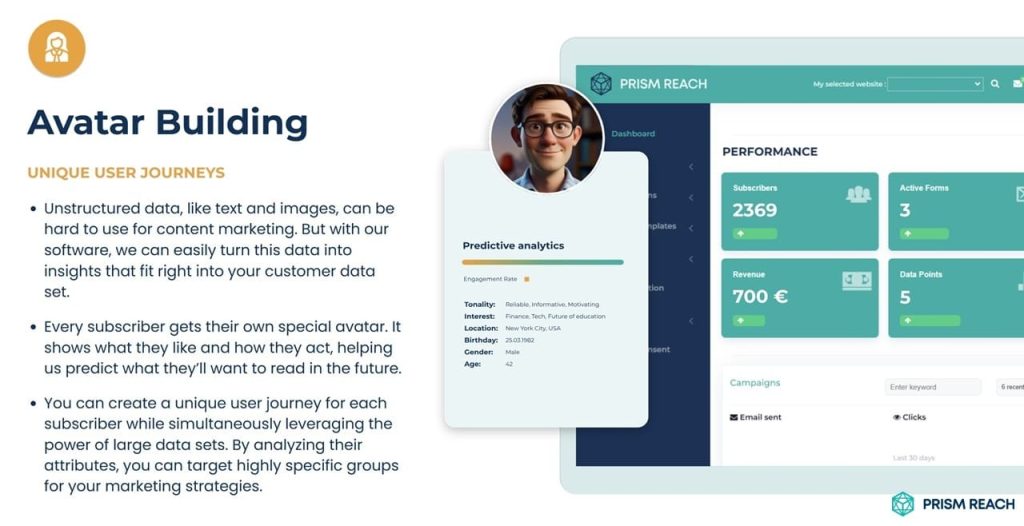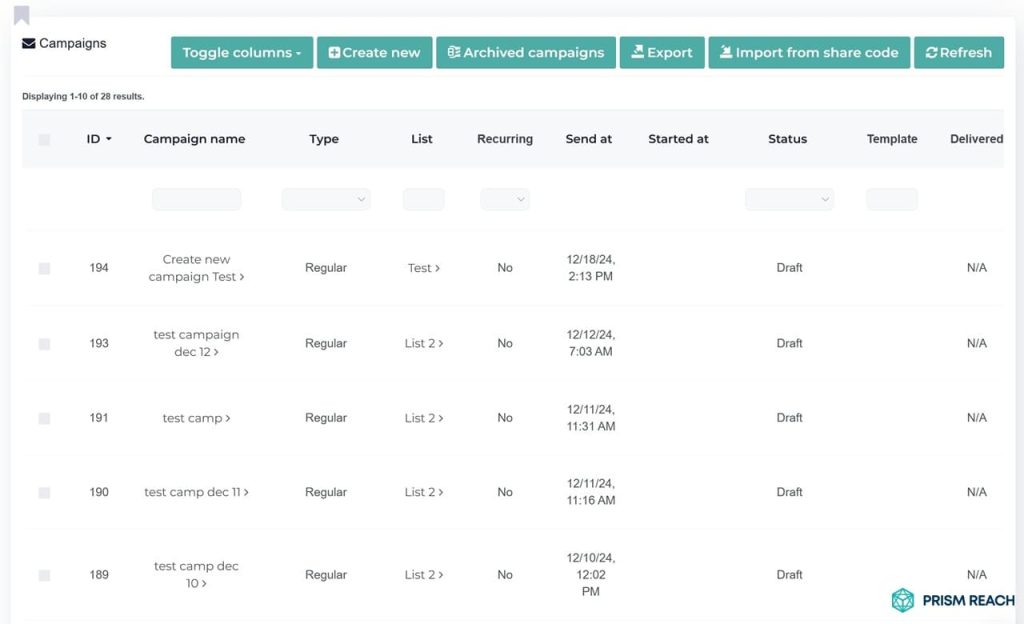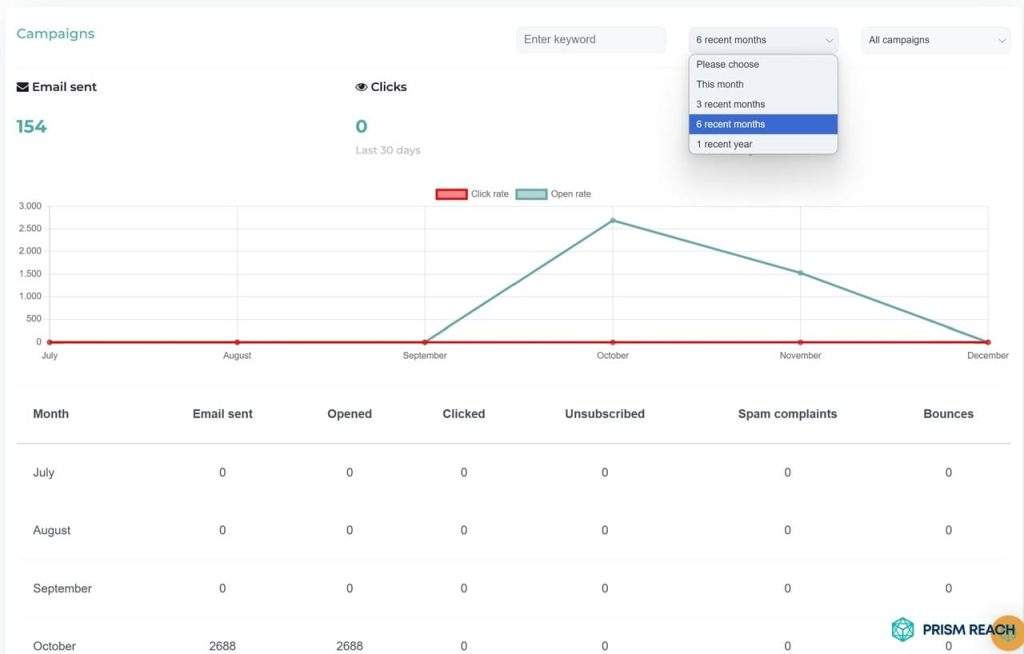In today’s digital landscape, email marketing remains a cornerstone of customer relationship management. As businesses strive to cut through the noise of overcrowded inboxes, the focus has shifted from mere promotional blasts to crafting personalized, value-driven communications that foster lasting connections with customers.
The importance of building customer relationships through email marketing has never been more pronounced. With the rise of AI-powered tools and data-driven strategies, companies now have unprecedented opportunities to tailor their messaging, timing, and content to meet the unique needs and preferences of each subscriber. This level of personalization not only enhances engagement but also builds trust and loyalty, ultimately driving long-term business success.
Key Facts
- Personalized email campaigns can increase revenue by up to 760% compared to generic, one-size-fits-all approaches.
- According to a study by Epsilon, 80% of consumers are more likely to make a purchase when brands offer personalized experiences.
- Effective email relationship building can lead to a 50% increase in customer retention rates, significantly impacting a company’s bottom line.

Strategies for Building Customer Relationships Through Email Marketing
Building strong customer relationships through email marketing requires a blend of personalization, engagement, and strategic planning. Here are ten lesser-known but highly effective strategies that focus on enhancing engagement, personalization, and overall customer experience:
1. Behavioral Trigger Emails
Implement automated emails that are triggered by specific customer actions, such as abandoning a cart or browsing a product without purchasing. These emails can remind customers of their interest and encourage them to complete their purchase, fostering a sense of attentiveness from your brand.
- Benefits:
- Reminds customers of their interests, reducing cart abandonment.
- Provides timely and relevant prompts to encourage conversions.
- Enhances the customer experience by addressing their immediate needs.
- Implementation Tips:
- Set up triggers based on key customer actions like cart abandonment or product views.
- Personalize the email content to reflect the specific products or actions taken.
- Include clear and compelling calls-to-action to guide customers towards completing their purchase.
2. Dynamic Content Personalization
Use dynamic content blocks within your emails to tailor messages based on user behavior or preferences. For example, showcasing products based on past purchases or browsing history can create a more personalized experience that resonates with individual customers.
- Benefits:
- Increases relevance of email content, leading to higher engagement.
- Enhances customer satisfaction by addressing individual preferences.
- Boosts conversion rates through targeted product recommendations.
- Implementation Tips:
- Segment your email list based on past purchase behavior and browsing history.
- Use dynamic content blocks to display personalized product recommendations.
- Regularly update and refine segments to ensure ongoing relevance.
3. Customer Milestone Celebrations
Send personalized emails to celebrate customer milestones, such as anniversaries or birthdays, offering special discounts or rewards. This approach not only makes customers feel valued but also strengthens their emotional connection to your brand.
- Benefits:
- Builds emotional connections by acknowledging important customer milestones.
- Encourages repeat purchases through exclusive offers.
- Enhances brand loyalty by showing appreciation for customers.
- Implementation Tips:
- Collect important dates like birthdays and anniversaries during the signup process.
- Create automated email sequences to celebrate these milestones.
- Offer meaningful rewards or discounts to make the celebrations special.

4. Interactive Email Features
Incorporate interactive elements like polls, quizzes, or embedded videos in your emails. These features encourage engagement and allow customers to interact with your content directly, making the email experience more enjoyable and memorable.
- Benefits:
- Increases engagement by making emails more dynamic and entertaining.
- Encourages interaction, leading to higher click-through rates.
- Provides valuable insights into customer preferences and behaviors.
- Implementation Tips:
- Use polls to gather feedback on products or services.
- Incorporate quizzes to help customers find the best products for their needs.
- Embed videos to showcase product demonstrations or brand stories.
5. Feedback Loops
Regularly solicit feedback from your subscribers through surveys or direct questions in your emails. This practice shows that you value their opinions and are committed to improving their experience based on their input.
- Benefits:
- Provides valuable insights for improving products or services.
- Builds trust by demonstrating that you value customer opinions.
- Enhances the overall customer experience through continuous improvement.
- Implementation Tips:
- Include short, easy-to-complete surveys in your emails.
- Ask specific questions to gather actionable feedback.
- Use the feedback to make meaningful changes and communicate those improvements to your subscribers.
6. Exclusive Content for Subscribers
Provide subscribers with exclusive access to content, such as early product launches, behind-the-scenes insights, or special reports. This not only incentivizes sign-ups but also fosters loyalty by making subscribers feel like part of an exclusive community.
- Benefits:
- Encourages sign-ups by offering unique and valuable content.
- Builds a sense of exclusivity and community among subscribers.
- Enhances customer loyalty by providing ongoing value.
- Implementation Tips:
- Create content that is truly exclusive and not available to non-subscribers.
- Promote exclusive content as a key benefit of subscribing.
- Regularly update and refresh exclusive content to maintain subscriber interest.

7. Storytelling in Emails
Use storytelling techniques to create compelling narratives around your brand or products. Sharing customer success stories or the journey behind a product can create emotional connections and enhance engagement.
- Benefits:
- Creates emotional connections with subscribers through relatable stories.
- Enhances engagement by making emails more interesting and memorable.
- Builds a stronger brand identity by sharing your brand’s story.
- Implementation Tips:
- Share authentic and relatable stories that align with your brand values.
- Incorporate visuals like images and videos to bring stories to life.
- Highlight customer success stories to showcase the impact of your products or services.
8. Community Building Initiatives
Encourage subscribers to join online communities or forums related to your brand where they can share experiences and connect with other customers. This fosters a sense of belonging and strengthens relationships beyond email interactions.
- Benefits:
- Builds a sense of community and belonging among subscribers.
- Encourages peer-to-peer interactions, enhancing engagement.
- Strengthens brand loyalty through active participation.
- Implementation Tips:
- Create dedicated online spaces like Facebook Groups or branded forums.
- Promote these communities in your emails and encourage sign-ups.
- Engage actively in the community to foster participation and maintain interest.
9. Surprise and Delight Campaigns
Occasionally send unexpected gifts, discounts, or personalized notes to loyal customers without any prior indication. This “surprise and delight” strategy can leave a lasting impression and enhance customer loyalty.
- Benefits:
- Creates positive emotional experiences with your brand.
- Enhances customer satisfaction and loyalty.
- Encourages word-of-mouth promotion through delightful surprises.
- Implementation Tips:
- Identify loyal customers based on their purchase history or engagement levels.
- Personalize the surprise to align with the customer’s preferences.
- Ensure the gesture is genuine and adds real value to the customer experience.
10. Lifecycle Email Campaigns
Develop targeted email campaigns based on the customer lifecycle stage (e.g., onboarding new users, re-engaging inactive customers). Tailoring content to each stage ensures that communications are relevant and timely, improving overall engagement.
- Benefits:
- Ensures email content is relevant to the customer’s current stage.
- Enhances the customer experience by providing appropriate content at each stage.
- Increases engagement and retention by addressing specific needs and behaviors.
- Implementation Tips:
- Map out the different stages of your customer lifecycle.
- Create tailored email sequences for each stage with relevant content.
- Use automation tools to trigger emails based on customer actions and lifecycle stages.

Hidden Gem Strategies
In addition to the foundational strategies, incorporating these five hidden gem strategies can further enhance your email marketing efforts, making them more organized, effective, and aligned with your overall marketing goals:
1. Incorporate a Theme for Each Campaign
Assigning a specific theme to each email campaign helps unify your content and allows for deeper storytelling. For example, a “Customer Appreciation” theme can guide your content creation and messaging to resonate with loyal customers.
- Benefits:
- Provides a cohesive narrative for your email campaigns.
- Makes content planning easier and more focused.
- Enhances brand storytelling and connection with subscribers.
- Implementation Tips:
- Brainstorm themes that align with your business goals and audience interests.
- Ensure themes are flexible enough to accommodate real-time events or changes.
- Communicate campaign themes clearly to your team to maintain alignment.
2. Utilize Color-Coding for Content Types
Implementing a color-coding system in your email marketing calendar helps differentiate between various content types, such as promotions, newsletters, and educational content. This visual cue ensures a balanced mix of content and prevents overloading subscribers with one type of message.
- Benefits:
- Enhances visual organization of your email schedule.
- Ensures a balanced and diverse content mix.
- Facilitates quick identification of content types at a glance.
- Implementation Tips:
- Assign specific colors to different content categories.
- Use consistent color codes across all campaigns for easy reference.
- Incorporate color legends in your calendar tool for clarity.
3. Plan for A/B Testing
Scheduling specific campaigns dedicated to A/B testing different elements like subject lines, send times, or content formats allows you to gather valuable data systematically over time. This structured approach ensures continuous improvement of your email marketing strategies.
- Benefits:
- Provides data-driven insights to optimize email performance.
- Helps identify what resonates best with your audience.
- Enhances the effectiveness of your email campaigns through iterative testing.
- Implementation Tips:
- Identify key elements to test based on your campaign goals.
- Allocate specific dates for conducting A/B tests to ensure consistency.
- Analyze results thoroughly and implement winning variations across campaigns.
4. Integrate Key Performance Indicators (KPIs)
Including KPIs directly in your calendar entries keeps performance metrics top of mind and allows for easy tracking of success against goals. This practice ensures that every campaign is aligned with measurable objectives, facilitating better performance analysis and strategy refinement.
- Benefits:
- Ensures alignment of campaigns with business goals.
- Facilitates easy monitoring of campaign performance.
- Helps in making informed, data-driven decisions for future campaigns.
- Implementation Tips:
- Define specific KPIs for each campaign based on your objectives.
- Include these KPIs in the notes or descriptions of calendar entries.
- Regularly review KPI performance to adjust strategies as needed.

5. Include Subscriber Preferences
Maintaining a section in your calendar that tracks subscriber preferences and segments ensures that your emails are tailored to the interests of different audience groups. This information guides content creation and helps in delivering highly relevant emails.
- Benefits:
- Enhances the relevance and personalization of your email content.
- Increases subscriber engagement and satisfaction.
- Reduces unsubscribe rates by respecting subscriber preferences.
- Implementation Tips:
- Regularly update subscriber preference data in your calendar.
- Use this data to inform content themes and segmentation strategies.
- Ensure that content aligns with the identified preferences of each segment.
Innovative Solutions by Prism Reach
While implementing these strategies can significantly improve your email marketing efforts, leveraging advanced technology can take your campaigns to the next level. This is where Prism Reach comes into play. Our AI-powered SaaS solution is designed to revolutionize your email marketing efforts by automating and optimizing many of these engagement and conversion-boosting strategies.
Key Benefits of Prism Reach:
- Enhanced Personalization: Prism Reach leverages AI to create detailed user avatars, allowing for highly personalized content that aligns with each subscriber’s unique preferences and behaviors.
- Optimized Scheduling: The platform uses predictive analytics to determine the best times to send emails to each individual subscriber, maximizing the chances of your emails being opened and engaged with.
- Advanced A/B Testing: Prism Reach simplifies the A/B testing process, enabling marketers to test unconventional elements efficiently and implement the most effective variations across their campaigns.
1. Utilize Prism Reach’s AI-Powered Personalization
Prism Reach’s AI-driven personalization capabilities enable you to deliver highly relevant content based on subscriber behavior and preferences. By analyzing first-party data, Prism Reach ensures that each email is tailored to the individual, enhancing the user experience while maintaining privacy compliance.
2. Implement Adaptive Testing with Prism Reach
Prism Reach’s adaptive testing feature allows you to test multiple variations of your email content simultaneously. Unlike traditional A/B testing, adaptive testing automatically adjusts traffic distribution based on performance, identifying the best-performing content more efficiently. This ensures that your emails are always optimized for maximum engagement and conversion.
3. Leverage Prism Reach’s Data Security Features
With Prism Reach, data security is paramount. The platform includes advanced security measures such as encryption and regular security audits, ensuring that subscriber data is protected against breaches and unauthorized access. This commitment to data security builds trust with your audience and aligns with compliance requirements.
Upgrade Your Email Marketing with AI Personalization!
Conclusion
Building customer relationships through email marketing is a powerful strategy that can yield significant long-term benefits for businesses. By focusing on personalization, consistency, automation, and two-way communication, companies can create meaningful connections with their subscribers that extend far beyond the inbox.
As email marketing continues to evolve, leveraging advanced technologies like AI-powered personalization will become increasingly crucial for staying competitive. By embracing these innovations and consistently delivering value to your subscribers, you can build a loyal customer base that drives sustainable growth for your business.
Prism Reach represents a significant advancement in personalized email marketing technology. By leveraging AI to understand and predict subscriber preferences, Prism Reach delivers content that is not only relevant but also timely, enhancing the overall impact of digital marketing campaigns and fostering stronger connections between publishers and their audiences.
Ultimately, the key to successful email marketing lies not just in the tools chosen but in how effectively they are leveraged to create meaningful connections with your audience. Whether creating detailed campaign briefs, leveraging interactive elements, or utilizing AI-driven insights, the focus should remain on delivering value and fostering engagement with your subscribers. With persistence, analysis, and the right tools, you can transform your email marketing into a powerful engine for growth and customer engagement.